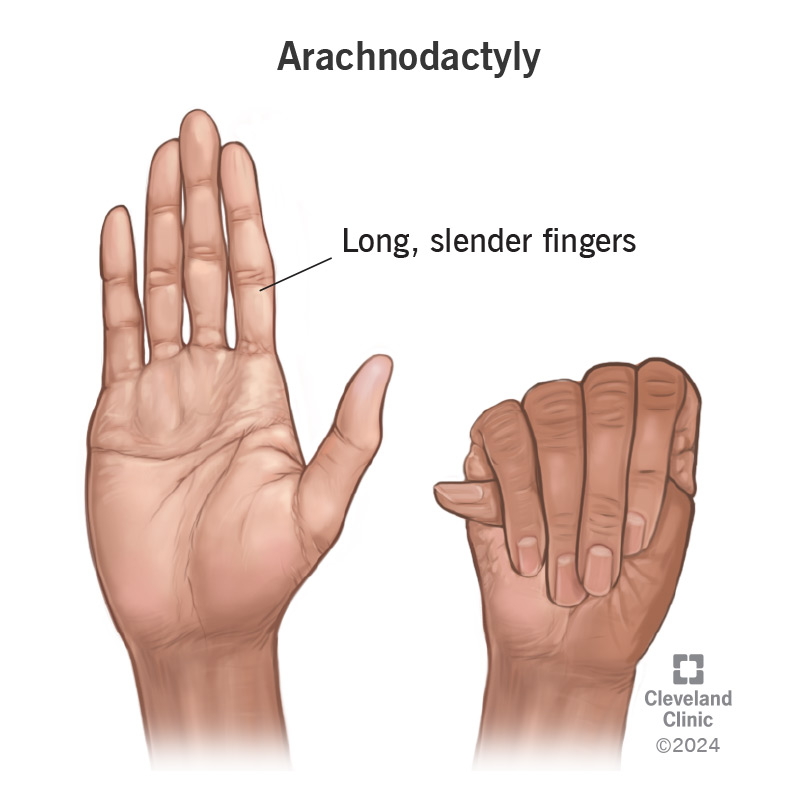Arachnodactyly is having long, spidery fingers. “Arachno-” means spider, and “-dactyly” is the arrangement of your digits (like fingers, and sometimes toes). Arachnodactyly isn’t a medical condition, but it can be a sign of one. When this is the case, you’ll usually have other signs and symptoms.
Advertisement
Cleveland Clinic is a non-profit academic medical center. Advertising on our site helps support our mission. We do not endorse non-Cleveland Clinic products or services. Policy

Arachnodactyly means “spider fingers.” It’s a term healthcare providers use to identify unusually long, slender fingers that resemble spiders’ legs.
Advertisement
Cleveland Clinic is a non-profit academic medical center. Advertising on our site helps support our mission. We do not endorse non-Cleveland Clinic products or services. Policy
Hand anatomy differences like arachnodactyly can sometimes be a sign of genetic disorders. But they’re not always. You may just have naturally long and slender fingers, without any underlying medical condition.
Your genes determine your physical features, like long and slender fingers. Most of the time, physical features are just that. But sometimes, your genes carry a variation that changes something important about how your body develops. Sometimes, arachnodactyly comes from this sort of variation.
The genetic disorders that can cause arachnodactyly are connective tissue disorders. They affect how the connective tissues in your body develop — tissues like your bones, skin, cartilage, tendons and ligaments. They can affect not only your physical appearance but also how well these tissues function.
Some of these conditions include:
Advertisement
Long, spiderlike fingers on their own shouldn’t cause you any trouble or need any treatment. But if your healthcare provider spots arachnodactyly, they might want to check for other signs and symptoms of genetic connective tissue disorders. These conditions will usually cause other recognizable features.
Your healthcare provider might ask when you first noticed arachnodactyly, and if you have any known family history of connective tissue disease. If they suspect a genetic disorder, they might suggest genetic testing for it. These disorders aren’t curable, but treatment can help you manage their effects.
If you have long and slender fingers and you think they resemble spider legs, you might wonder if they fit the medical description of arachnodactyly. You might even wonder if they’re a sign of an undiagnosed medical condition. If you’re worried, you can always ask a healthcare provider for their opinion.
In general, if you or your child has a connective tissue disease, you’ll probably notice other signs and symptoms beyond arachnodactyly. Signs and symptoms can be mild to severe, and sometimes they’re slow to appear in babies. If you think you’re noticing skeletal changes, see your healthcare provider.
Having long, spidery fingers isn’t a disease in itself. But sometimes, arachnodactyly is a sign of an underlying disease. The types of diseases that can cause it will also cause other signs and symptoms. If you suspect you or your child might have one of them, a healthcare provider can diagnose it.
Advertisement
From sudden injuries to chronic conditions, Cleveland Clinic’s orthopaedic providers can guide you through testing, treatment and beyond.

Last reviewed on 10/28/2024.
Learn more about the Health Library and our editorial process.